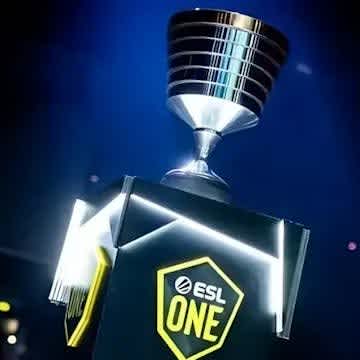BLAST’s Paris Major could herald a great new era for competitive CS
A fistful of frags in the City of Light could be just the jolt of energy to push CS:GO esports into becoming more of its own thing, rather than just an extension of skin sales the way it’s been for Valve for the past couple of years. It promises more than ESL’s grey dominance of the market and the sort of excitement factor that’s been reserved for Riot’s offerings in the past.
There are many reasons to be excited about the upcoming CS:GO Major. Though the playerbase’s loyalty to the franchise has always been clear and the viewing numbers have stayed strong through all the trials and tribulations of recent years, the tournament circuit’s convulsions and changes made for dire viewing.
Ownership consolidation in uncouth hands, lessened competition, more closed gardens and invitation-only affairs: things were changing for the worse, and meanwhile, the Majors remained moribund, postponed or cancelled, with an antiquated format and diminishing prestige.
Not all problems have been fixed so far, but great strides have been made, and the showdown in Paris could mark the beginning of a great new era for competitive Counter-Strike.
It’s not just ESL
With the ESL-FACEIT consolidation, there really aren’t any other notable tournament organizers in the scene than BLAST. WePlay does a great job with the Academy League (and they have a good track record over in Dota), but there was no chance they were going to get a Major anytime soon. So, the perennial underachievers of PGL or StarLadder? No, we’re in the best possible hands.
Don’t underestimate the value of BLAST’s decision to bid for a Major. These events are money-sinks for the organizers. They consider the prestige boost worth their while, which suggests long-term plans with the game. Seriously, what a turnaround though. This is the same organization that ran single-weekend best-of-one-fests with draws and dodgy plans for events with a closed circuit. Unfortunately, semi-walled gardens have become the norm, but this is still perhaps the best possible timeline for us.
BLAST’s broadcast production is unparalleled in the industry and they will be great ambassadors for the game. It’s impossible to imagine the same sort of behind-the-scenes broadcaster dramas or the audio production issues that plagued the past two Majors – and their continued involvement in the scene means ESL will have to keep upping the ante, too, which is to the benefit of everyone who likes elite-level CS:GO matches.
More appealing storylines for casuals
The great paradox of competitive CS is that the game grew the most in the years when casuals had the least exciting clashes to watch. Whether it was the eternal, tactics-driven dominance of Astralis, a pantheon-worthy evolution of the game but nevertheless one that wasn’t as appealing to casual fans more on the lookout for highlight reels and epic comebacks, or the online-era chokehold of CIS sides, whose success was simply not as marketable with content for an English-speaking audience.
So far, there was no Prost-Senna affair in elite-level Counter-Strike when all the eyeballs were glued to the screen. NAVI and FaZe gave us a good glimpse of what is possible at the tail end of last season, especially with the final of ESL One Cologne that went long into the night, and now G2 seems like a potential contender with a meme-fueled lineup of great casual appeal.
Couple this with the continued presence of past titans like FalleN and the permanent will-they-or-won’t-they soap opera between Astralis and NIP, and it goes to show that there are more storylines to enjoy for less tactics-driven fans than there ever have been in the pro scene.
Source 2? Maybe?
Look, it’s clearly coming, and it will make a major difference in the way the game operates. Many of Counter-Strike’s niggling issues are nonsensical in the context of modern gaming software, and if the tower of duct tape gets a new scaffolding, it promises an impact for casual players as well.
Visual appeal is important, and CS has not been big on that for a long time. More than just a new coat of paint, the long-awaited technological upgrade could also help solidify CS:GO as the premiere FPS game of our time.
A legendary venue
Let’s face it, Paris is Paris. Neither Berlin nor Antwerp can compare, and though a place like Rio or Stockholm can capture the regional esport fan’s imagination, not many cities have a greater general appeal than the capital of France. It’s the sort of place where Riot brings the showpiece matches of the League of Legends Worlds Championship, and say what you will about the company, they’ve taken their esports offerings infinitely more seriously than Valve ever have, especially with regard to CS:GO.
Their goal is to package the esports product as its standalone profitable value proposition, not just a mere marketing vehicle for the main game. Hence the sponsors like Mercedes, the trophies designed by Louis-Vuitton and other integrations fans of Valve games can only dream of drowning in the sea of crypto skin sites.
Now, we’ve had Emmanuel Macron himself announce the event, and the Accor Arena has been a host of great events since 1984. All this gives a bit of old-money je ne sais quoi to the event, which is a great new thing to have for this iconoclastic game that’s all about counter-terrorists stopping bomb threats. There’s still a lot of work to be done, but the future burns bright.





